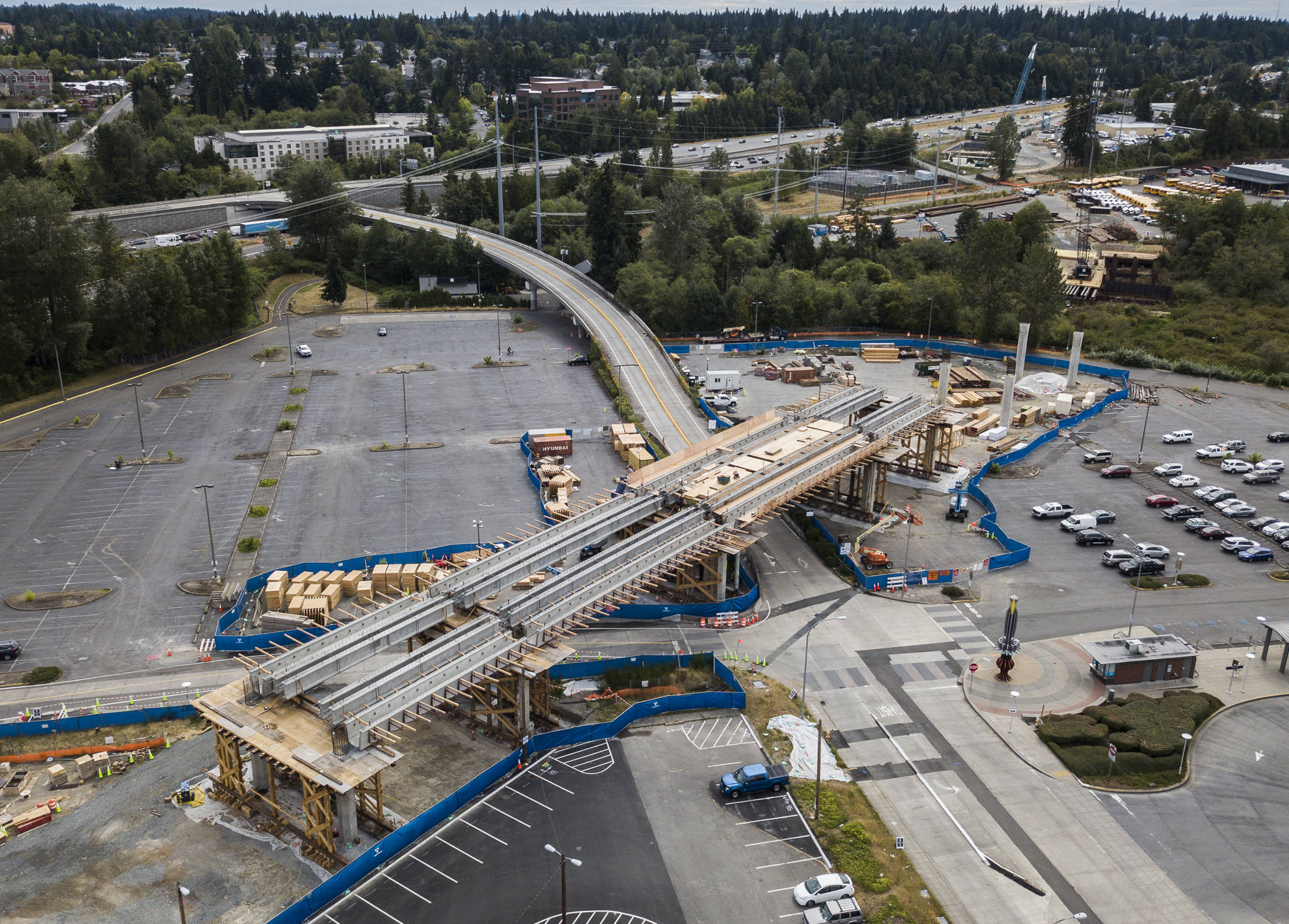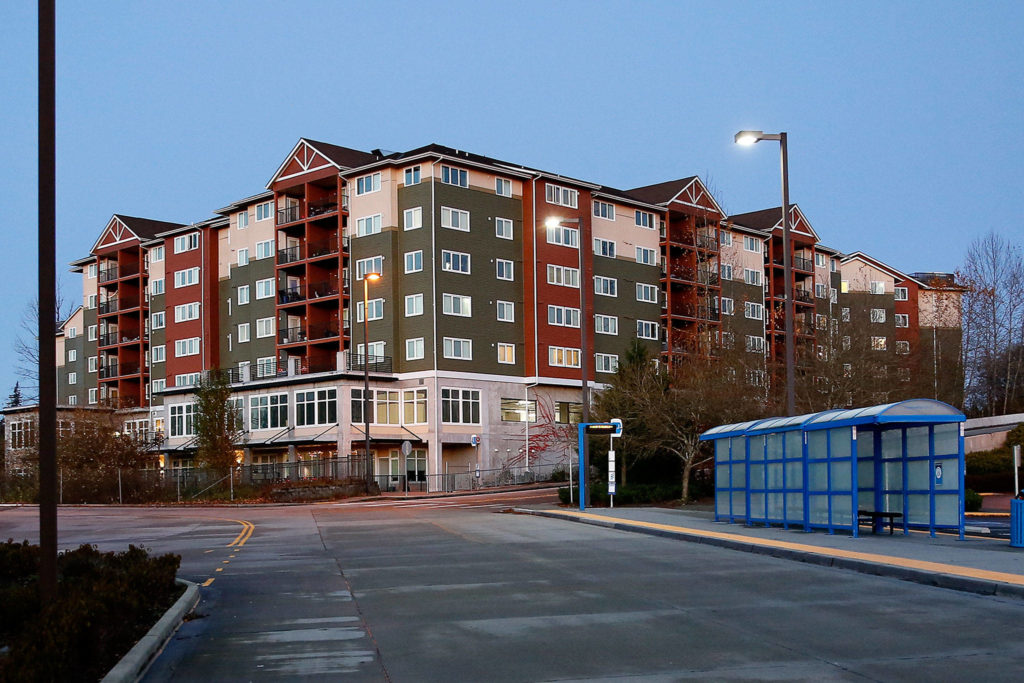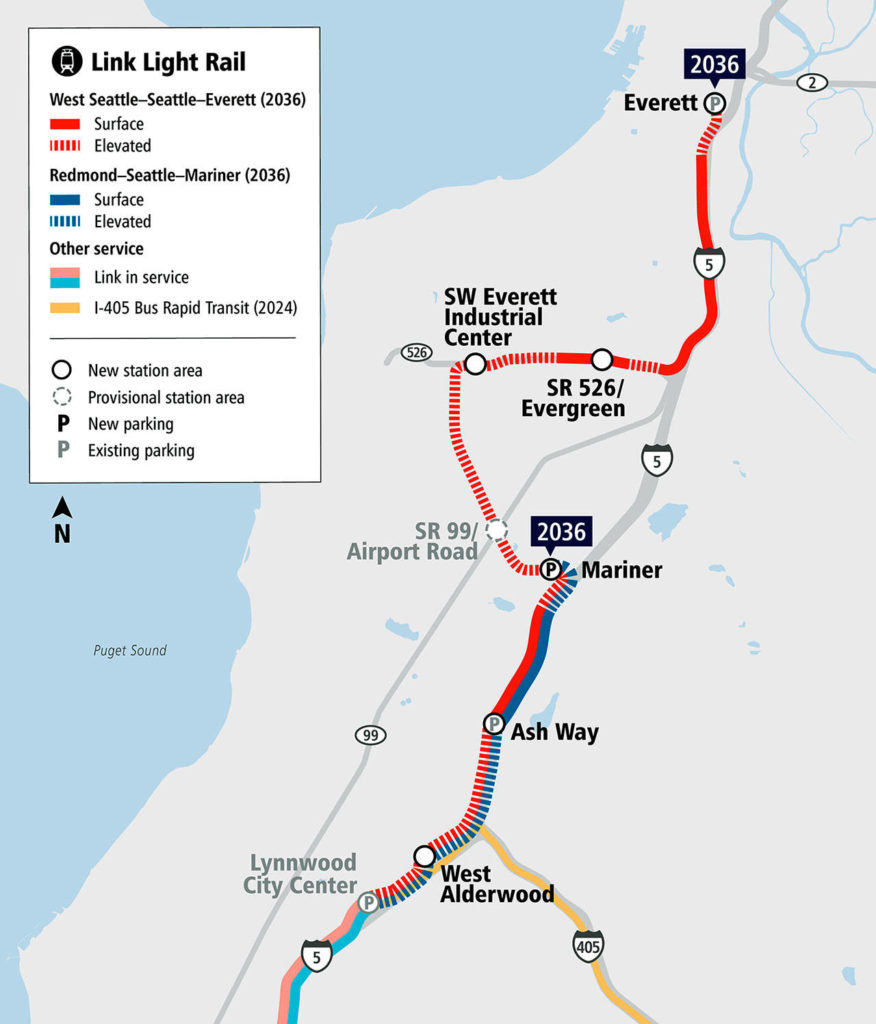If Snohomish County followed the results of an interactive online map, areas around I-5 from Lynnwood to Everett could become magnets for high-rise apartments.
Early planning work for neighborhoods around light rail stations included the map for people to select what housing types they’d like to see in those areas.
From the ST3 funding that voters approved in 2016, the Everett light rail extension includes stations in Snohomish County at 164th Street SW near Lynnwood and 128th Street SW near Everett. A station at Airport Road and Highway 99 hasn’t been funded, but it’s possible if money is cobbled together.
People certainly like their single-family homes, but may be warming to the idea that even in urban unincorporated Snohomish County density is needed. That didn’t shock county planning principal Dave Killingstad.
“We were seeing people who were making specific comments about density in and around the light rail stations,” he said, with people referring to housing development near light rail in Vancouver, B.C. and Portland, Oregon. “We’ve also seen the complete opposite of the spectrum, which is a lot of people saying, ‘I like my single-family house, I like my single-family neighborhood. Please don’t change it.’”
Housing and transit are likely to be developed concurrently over the coming decades as light rail crawls toward Everett and Snohomish County braces for a projected population boom of over 420,000 people in the next 10 years. That could displace thousands of people if they get priced out of their homes, something housing advocates and experts say has been happening for years.
The Puget Sound Regional Council, a group that works on planning and policy for several Western Washington counties, estimates people near light rail stations are between moderate and high risk of displacement.
“It’s important because we want to be careful not to push out people who need transit the most,” said Sound Transit Vice Chair Paul Roberts, who serves on the Everett City Council.
Between 2010 and 2019, Snohomish County’s population grew 14.8%. Over a similar period, the county’s supply of low-rent housing decreased at least by half, according to figures from the county. It has led to a third of Snohomish County households being considered “rent burdened,” in which they pay over 30% of their household income on housing and utilities.
With more people on the way, that problem could grow without expansion of housing types, including low-income housing and what the county calls “missing middle,” such as duplexes, triplexes and two-story courtyard apartment buildings.
“As these centers get closer to actually being built, either the demand for land surrounding that station is going to accelerate or is going to be priced out of the range for affordable housing,” Housing Hope CEO Fred Safstrom said.
Results from a summer survey by the county’s planning department show a map with dozens of squares for buildings 10 stories and taller around light rail stations expected to open and operate in 2036, as part of Sound Transit’s Everett Link extension. Currently the tallest buildings in those areas are six stories.
But there are plenty of circles for detached single-family homes.
Without density, commutes will only grow. That’s why the county is interested in support for housing near light rail to reduce single-occupant vehicle trips.
“Going hand in hand with all the work we’re doing to look at land use, we’re also looking at transportation at a fairly fine-grain detail,” Killingstad said.
In addition to the housing elements of the subarea planning around light rail stations, Snohomish County is working on “a companion set” of road projects. That includes improving bus movement and non-motorized improvements, plus possibly connecting roads that are separated now. But the county doesn’t envision paving over the light rail areas for park and rides.
“We just don’t have the money and the land to build parking for everybody at those stations,” Killingstad said.
Snohomish County has the benefit of seeing how light rail development has affected housing in King County and Seattle, as well as other parts of the country. Apartments and other forms of dense housing now line much of the light rail line in Seattle, and that trend is creeping north in Lynnwood and Mountlake Terrace.
“It is a good thing for low-income people to reside in transit-oriented neighborhoods,” Safstrom said. “The more residences you can have that are in walking distances to the transit station, the higher the ridership is going to be for that system.”
All of Housing Hope’s residential properties are close to transit that takes people to the county’s major hub at Everett Station, he said. From there, people can board bus rapid transit, commuter lines into other counties or the Sounder. Once the Everett Link operates in 2036, it will also connect people with light rail there.
South Snohomish County is Housing Hope’s next focus area for affordable housing development, starting with two proposed construction projects in Edmonds and Lynnwood.
But as the county informs people about the housing needs and possibilities, affordable housing advocates are pushing government officials to do everything they can to encourage low-income development now.
“From a zoning perspective, I think one of the most effective things that can be done is to include inclusionary housing,” Safstrom said.
The term means a government requirement for new development to include a percentage of affordable housing units.
Mark Smith, CEO of the Housing Consortium of Everett and Snohomish County, agreed that inclusionary housing is useful and said the county should partner with nonprofit housing developers for site control, either through $1 annual leases or selling land to them.
Another signal that the county is ready and willing to make these projects feasible would be reducing parking requirements, eliminating impact fees and reducing or waiving sewer hookup fees, like Everett did for its Metro Everett subarea plan, Smith said. The savings from those incentives add up on large projects and can be put toward the next development.
“We will respond to that,” Smith said.
Light rail open house
Snohomish County has an online open house presentation about light rail communities near Lynnwood and Everett, where Sound Transit stations are planned near I-5 at 164th Street SW and 128th Street SW. There also are surveys to fill out. Visit bit.ly/3mabsb6.
Have a question? Email streetsmarts@heraldnet.com. Please include your first and last name and city of residence.
Talk to us
> Give us your news tips.
> Send us a letter to the editor.
> More Herald contact information.



























